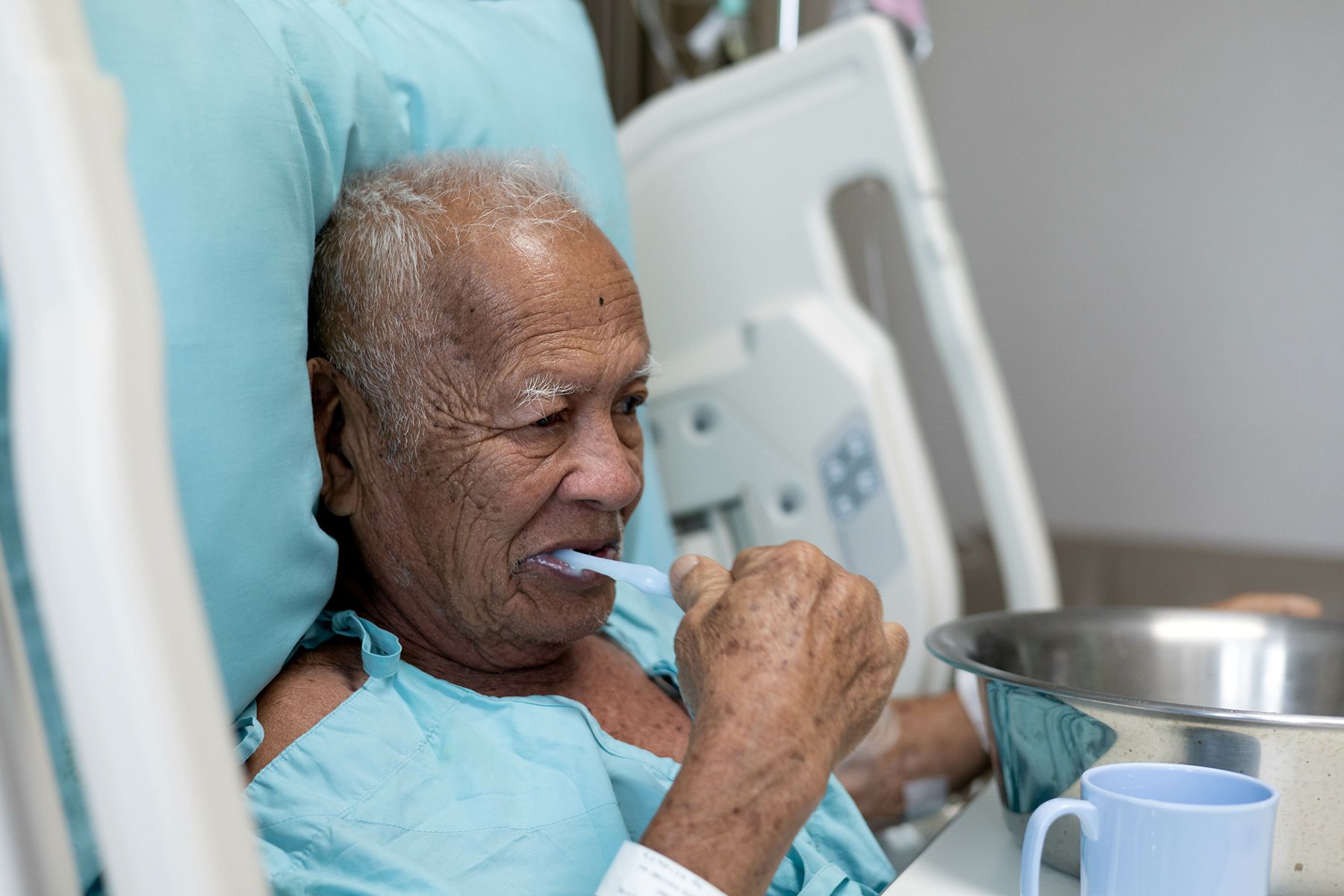Mortality and Pneumonia Rates Decline When Hospital Patients Brush Their Teeth
The data from these meta-analyses highlight the value of developing systems to promote daily toothbrushing among those who have been hospitalized and, particularly, those on mechanical ventilation.
Image Credit: © stock.adobe.com / Phimchanok

Toothbrushing every day is linked to lower pneumonia rates as well as lower rates of intensive care unit (ICU) mortality among hospitalized patients, according to recent findings, and these are particularly true among those undergoing invasive mechanical ventilation.1
These results were the product of a recent systematic review and meta-analysis looking at data from several different clinical trials on hospital-acquired pneumonia (HAP) rates and daily oral care regimens with toothbrushing.
This research was led by Selina Ehrenzeller, MD, from the Department of Population Medicine at Harvard Medical School and the Harvard Pilgrim Health Care Institute in Boston. Ehrenzeller and colleagues noted that there had previously been conflicting data on associations between toothbrushing and pneumonia.2,3
“Therefore, we conducted an updated meta-analysis of randomized clinical trials assessing the association of toothbrushing with HAP, mortality, length of stay, duration of mechanical ventilation, and use of antibiotics,” Ehrenzeller and colleagues wrote.
Background and Findings
The investigators used both a systematic review and meta-analysis of 15 different clinical studies to assess data on this topic, and their research was registered with PROSPERO. The team’s work covered a comprehensive search of several different databases and trial registries, and they imposed no date or language restrictions on the studies.
The primary search strategy, which the research team formed for PubMed, involved the combined use of Medical Subject Heading search terms and keywords that connected to toothbrushing and data on HAP. Studies the team deemed to be eligible included randomized clinical trials that had been conducted with subjects who were 16 years or older who had been in acute care hospitals.
In their searches, the investigators focused on the impacts of brushing regimens compared to non-toothbrushing routines. They also looked at health outcomes such as duration of mechanical ventilation, HAP (ventilator-associated pneumonia and/or non-ventilator-associated HAP), lengths of stay at hospitals, length of stay at ICU, death, or subject utilization of antibiotics.
The research team assigned 2 independent reviewers to screen the titles, abstracts, and full-text articles, with discrepancies being addressed through their shared collaboration. The investigators implemented covidence software in addition to a standardized data extraction form for selection of their research and extraction of data. This covered procedures, study qualities, outcomes, funding, and risk of bias.
Among the research team’s 15 trials that were assessed, they looked at data from 10,742 subjects. Specifically, 2033 of these individuals had been in the ICU and 8709 had been in non-ICU departments, though the overall population size was effectively found to be 2786 after adjusting for a cluster randomized trial.
The investigators reported that toothbrushing was shown to be linked to a much lower risk of HAP (RR, 0.67 [95% CI, 0.56-0.81]) and much lower ICU mortality risk (RR, 0.81 [95% CI, 0.69-0.95]). The research team found that reductions in pneumonia incidence were shown to be significant for mechanically-ventilated study subjects (RR, 0.68 [95% CI, 0.57-0.82]), though they were not for non-ventilated individuals (RR, 0.32 [95% CI, 0.05-2.02]).
Within the ICU, the team noted, brushing had been shown to be correlated with fewer mechanical ventilation days (mean difference, −1.24 [95% CI, −2.42 to −0.06] days) and correlated with a shorter stay in the ICU (mean difference, −1.78 [95% CI, −2.85 to −0.70] days). They added that twice-per-day brushing versus more frequent intervals was found to yield similar data.
The investigators found that there were consistent results seen in their low-bias sensitivity analysis of 7 trials. They added that non-ICU hospital length of stay and utilization of antibiotics were not linked with brushing teeth.
“Other questions we were unable to answer due to lack of pertinent studies include whether the type of toothpaste or choice of toothbrushing fluid affects outcomes, whether including tongue cleaning in the procedure increases the effect, and whether there is an interaction between toothbrushing and selective digestive tract decontamination,” they wrote.
References
- Ehrenzeller S, Klompas M. Association Between Daily Toothbrushing and Hospital-Acquired Pneumonia: A Systematic Review and Meta-Analysis. JAMA Intern Med. Published online December 18, 2023. doi:10.1001/jamainternmed.2023.6638.
- Sozkes S, Sozkes S. Use of toothbrushing in conjunction with chlorhexidine for preventing ventilator-associated pneumonia: a random-effect meta-analysis of randomized controlled trials. Int J Dent Hyg. 2023;21(2):389-397. doi:10.1111/idh.12560.
- De Camargo L, da Silva SN, Chambrone L. Efficacy of toothbrushing procedures performed in intensive care units in reducing the risk of ventilator-associated pneumonia: a systematic review. J Periodontal Res. 2019;54(6):601-611. doi:10.1111/jre.12668.